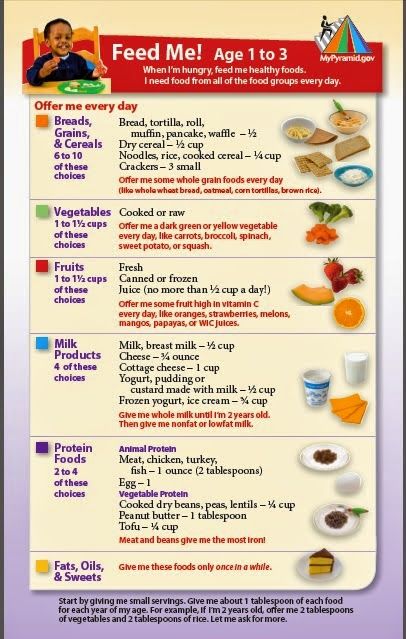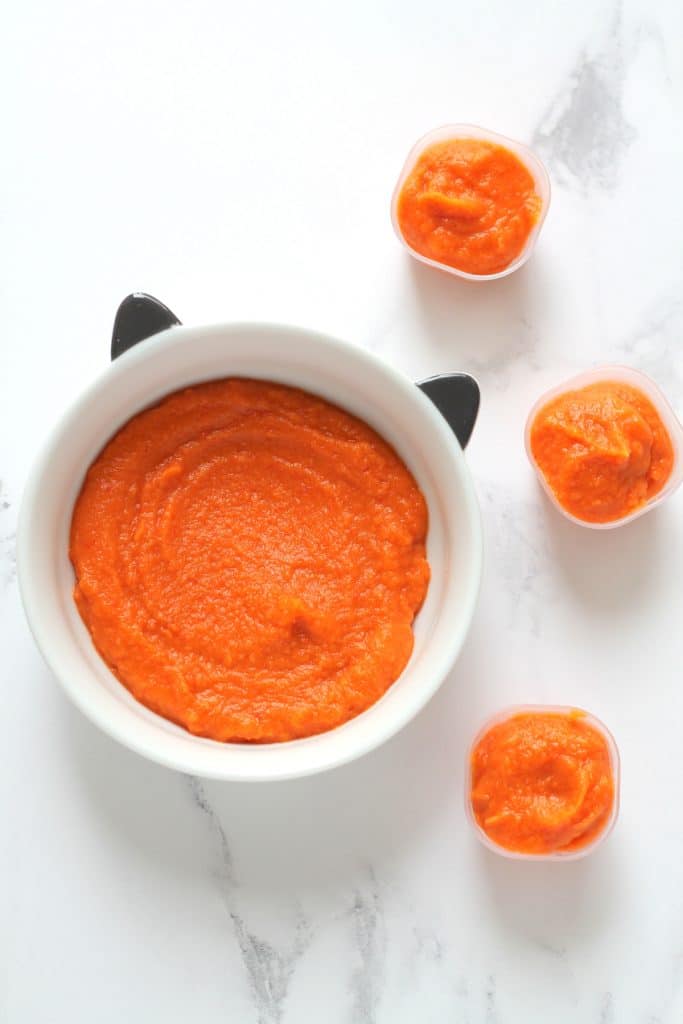Baby feeding technique
Baby-Led Weaning is a New Way of Feeding Your Baby - Learn More About it
Every parent remembers when they first introduced their baby to solid foods. This momentous occasion of spoon-feeding them pureed food is considered a major milestone for babies and their parents.
Today however, more and more parents are opting to skip the applesauce and mashed sweet potatoes and instead are adopting a new feeding technique called “baby-led weaning” ( or BLW) for their babies. This alternative approach to feeding, first introduced in the UK a decade ago, involves introducing solid chunks of foods much earlier on by placing them on the baby’s high chair and letting them grasp the food and feed themselves directly. As the name implies, feeding time is led by the baby as they determine the pace and the amount of food they consume; basically, baby-led weaning puts the baby in charge.
While children all develop at different paces, advocates of baby-led weaning agree that this method of eating shouldn’t be introduced until the baby is ready. Cues to begin BLW include making sure that your baby can sit up straight unassisted, have good neck strength and be able move food to the back of their mouth with up and down jaw movements. Most babies develop these skills by the sixth month, but some babies may not fully develop them until they are nine months old.
Proponents of BLW believe that it holds many benefits, including enhancing baby’s hand-eye coordination and other fine motor skills, including using their thumb and index finger to grasp their food. They also feel that it will produce healthier eaters than spoon-fed babies because BLW eaters get to choose how much they eat as opposed to traditional feeding methods, which sometimes results in force feeding. Other advantages that BLW supporters claim to be true is that it creates a more enjoyable feeding experience for babies and less stress on their parents.
Detractors of baby-led weaning feeders point out that these babies are generally underweight as compared to spoon-fed babies because they simply do not ingest that much when they are first introduced to this way of eating due to difficulties grabbing food. BLW babies also tend to be iron-deficient because they aren’t consuming the iron-fortified cereals that spoon–fed babies typically eat. Lastly, a big concern for many parents is the increased choking hazards associated with BLW, and while the American Academy of Pediatrics doesn’t have opinion of BLW, they do state that babies are ready for solid food once they are ready to sit up on their own and bring their hand to their mouth.
BLW babies also tend to be iron-deficient because they aren’t consuming the iron-fortified cereals that spoon–fed babies typically eat. Lastly, a big concern for many parents is the increased choking hazards associated with BLW, and while the American Academy of Pediatrics doesn’t have opinion of BLW, they do state that babies are ready for solid food once they are ready to sit up on their own and bring their hand to their mouth.
If you are considering baby led weaning for your child, here are a few tips:
- Continue breast feeding and / or formula feeding as this will continue to be your baby’s biggest source of nutrition until they are 12 months old.
- Begin BLW feedings with softer foods, such as ripe fruits, cooked egg yolks, and shredded meats, poultry and fish.
- Avoid foods that can pose as choking hazards, such as nuts, grapes, popcorn, or foods cut into coin shapes, like hot dogs.
- Do not leave your child unattended during BLW feeding times.
 Continue to supervise and socialize with them while they eat and to have them eat when the rest of the family does.
Continue to supervise and socialize with them while they eat and to have them eat when the rest of the family does. - Don’t panic if your baby gags as it is a safe a natural reflex. Instead of overreacting, prepare for a choking event by familiarizing yourself with the infant-specific Heimlich maneuver.
- Introduce new foods one at a time to pinpoint potential food allergies. A recommended length of time is three to four days between foods.
- The goal of BLW is to let your baby explore eating at their own pace. This may include the smashing, smearing, or dropping of food, so prepare for a mess.
Before you decide to adopt BLW to your child, it is a good idea to discuss with your child’s pediatrician as it may not be a good idea for all babies, especially those babies with known developmental delays or neurological issues.
To make an appointment with a pediatrician at Flushing Hospital’s Ambulatory Care Center, please call 718-670-5486.
All content of this newsletter is intended for general information purposes only and is not intended or implied to be a substitute for professional medical advice, diagnosis or treatment. Please consult a medical professional before adopting any of the suggestions on this page. You must never disregard professional medical advice or delay seeking medical treatment based upon any content of this newsletter. PROMPTLY CONSULT YOUR PHYSICIAN OR CALL 911 IF YOU BELIEVE YOU HAVE A MEDICAL EMERGENCY.
Please consult a medical professional before adopting any of the suggestions on this page. You must never disregard professional medical advice or delay seeking medical treatment based upon any content of this newsletter. PROMPTLY CONSULT YOUR PHYSICIAN OR CALL 911 IF YOU BELIEVE YOU HAVE A MEDICAL EMERGENCY.
Feeding Your Baby Solid Food
Nationwide Children’s Hospital
Babies should be fed only breastmilk or formula until about 6 months of age. Solid foods can then be started when your baby is ready. A baby is ready to eat from a spoon when he or she can maintain a sitting position while supported low at the hips, keep his or her tongue in the mouth and watch or act like they want to eat with others. If you question whether your baby is ready to start solid foods, please ask your pediatrician or dietitian.
You will need
- Small cup or bowl
- Sall baby spoon or plastic spoon
- Bibs
- Wet cloth or towel to wipe up spills
How to feed your baby
- Put the amount of solid food you plan to give into a bowl.
 Do not feed baby right from the jar because this may cause the remaining food to spoil faster. Cover the jar, place it in the refrigerator and use it within 2 days.
Do not feed baby right from the jar because this may cause the remaining food to spoil faster. Cover the jar, place it in the refrigerator and use it within 2 days. - A high chair or feeding chair should be used when you feed your baby. Always secure baby safely in the high chair using the seat strap. Never leave your baby alone in the high chair.
- Put a small amount of food on the tip of the spoon. Let your baby taste it. If he spits it out, place the food midway back on his tongue and let him swallow it. Have patience and let him learn how to swallow. Feed him slowly, allowing plenty of time to swallow the food. Remember, feeding will take time and be messy for a while.
- Never, ever, force your baby to eat. If baby is finished, stop offering food and try again at the next meal. It may take 10 to 20 tries before a food is accepted.
- Throw away any leftover food in the bowl after your baby is finished eating. Your baby may be finished eating if he does the following:
- Becomes distracted when eating
- Turns his head or closes his mouth
- Cries
- Spits out food
What to feed your baby
| 6 months old |
|
| 7 to 9 months old |
|
| 10 to 12 months old |
|
Safety tips
- Always supervise your baby’s meals.
- Avoid foods that may cause choking. In general, foods that may cause choking are smooth, round foods. Avoid pieces of hot dog, hard candies, nuts, seeds, grapes, popcorn, peanuts, raw carrots or pretzels.
- Your baby may be choking if: he cannot cough or cry; has a blue or purple face; grabs at the throat; has a weak cough, labored breathing, or loss of consciousness.
- Babies under 1 year of age should not be fed honey or foods that contain honey. Honey is not sterile. It may contain harmful bacteria that can cause illness in children younger than 1 year.
- Make sure the lids on jars of food are sealed tightly when you buy them. Do not buy the food if the seal is broken (if you press the top of the lid and it springs back, it means the seal is broken). Before opening the jar, wipe the jar and lid with a clean, damp cloth to remove dust.
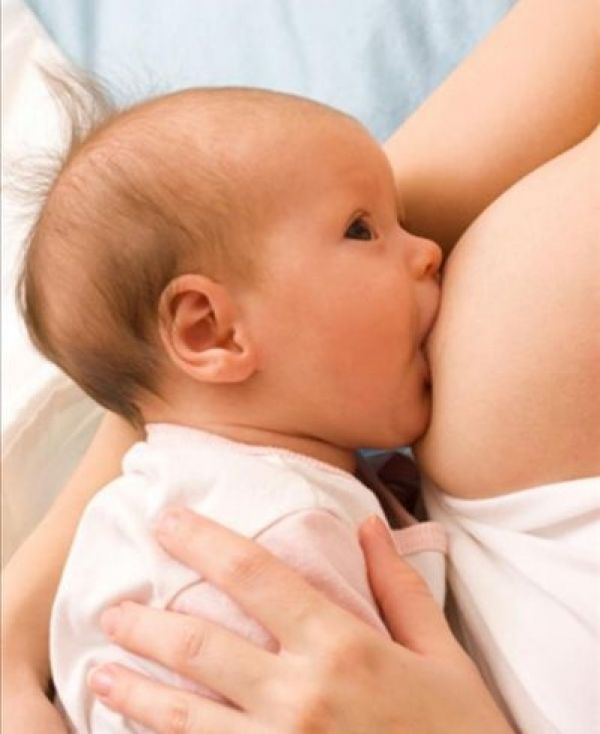
- Do not heat food in a microwave.
- All baby foods should be given with a spoon and not through a bottle, unless directed by your baby’s therapist or doctor.
Food allergies and food intolerance
When you add new foods to an infant's diet, food allergies or food intolerances sometimes develop. Some common symptoms of food allergies are:
- Skin rashes
- Severe vomiting after eating
- Hives like a skin rash (welts)
- Diarrhea
If your baby has any of the above symptoms, call your doctor for advice.
When you give new foods, give only one new food at a time. Then, wait 3 to 5 days before adding another new food.
- Other foods that baby has eaten before can also be given during this time.
- Try all plain foods before giving your baby mixed foods.
You can use the record in the PDF (download below) to keep a list of new foods and the date they were given. If a food allergy occurs, it will be easier for the doctor to know which food caused the allergy.
If a food allergy occurs, it will be easier for the doctor to know which food caused the allergy.
It may help to prevent food allergies in infants if you introduce eggs and age-appropriate foods that contain peanuts between 8 and 11 months of age. Try mixing 2 teaspoons of smooth peanut butter with hot water until it is a puree. Offer a small amount of this with close supervision.
If you have any questions, be sure to ask your baby’s doctor, nurse, or dietitian.
Feeding Your Baby Solid Foods (PDF)
HH-IV-8 12/80, Revised 8/17 Copyright 1980, Nationwide Children’s Hospital
Rules for breastfeeding - Budgetary institution of the Khanty-Mansiysk Autonomous Okrug - Yugra
Breastfeeding RulesThe correct positioning of the baby to the breast greatly facilitates feeding, ensures the flow of milk, helps prevent inflammation, cracked nipples, and engorgement of the mammary glands.
How to feed a baby. |
Programming, development of a version for the visually impaired - Internet laboratory "Delissimo"
This site uses cookies. They allow you to recognize you and receive information about your user experience. If you do not want your data to be processed, you must leave the site. If you continue to use the site, you GIVE CONSENT to the use of cookies, the processing and storage of your personal data.
OK, I agree.
Every woman can breastfeed her baby.
All troubles arise from ignorance of the rules and techniques of feeding.
The first rule is very important - early contact between mother and child in the maternity hospital, in the first minutes after birth.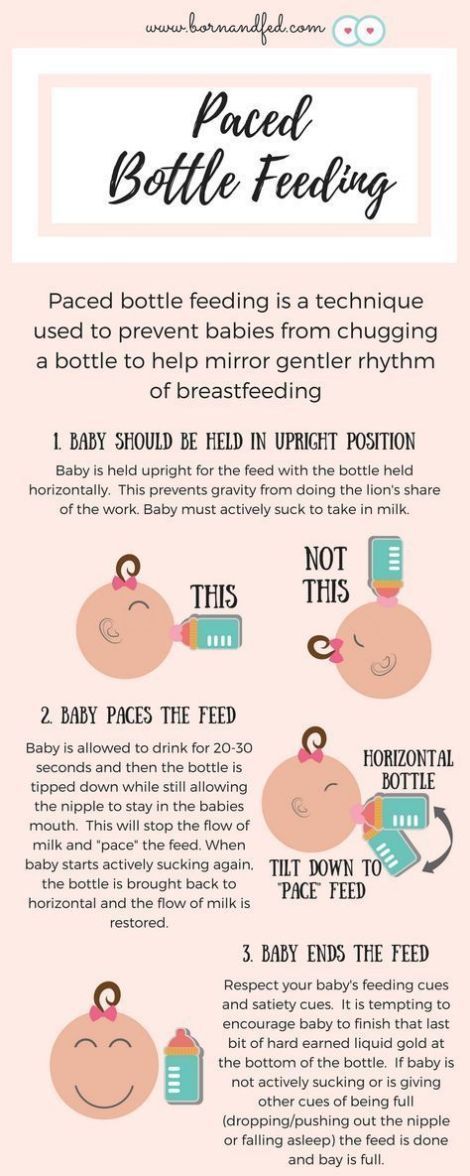
Psychological benefits of breastfeeding.
Breast milk has a positive effect on the formation of the emotional and intellectual sphere, the development of creative abilities.
- emotional connection from both mother and child:
- close, loving relationship between mother and child;
- - emotional satisfaction of mother and child;
- - the child cries less, positive emotions are formed;
- - the mother becomes more affectionate, attachment to the child appears, self-confidence; : - less likely that the child will be abandoned or offended; breast milk also protects against the occurrence of neuroses.
- Development: the child shows the best results of intellectual development and creative abilities at an older age. nine0011
No less important is the correct laying of the baby to the breast, because this is a powerful stimulus to provide the right amount of milk - galactopoiesis.
- The position of the mother during feeding should be comfortable.
 It is better to feed the baby either from a lying or sitting position.
It is better to feed the baby either from a lying or sitting position. - Take the chest in the palm of your hand with 4 fingers from below and 1 from above.
- Touch the nipple to the baby's lips so that he opens his mouth.
- The baby should capture not only the nipple, but also the halo. nine0011
- If the mother felt pain in her chest while feeding the child, this means that the child did not take the breast correctly. In this case, it is necessary to carefully touch the child's lips with a finger so that he opens his mouth, and not pull it by force. Try to apply to the chest again.
- Feed the baby on demand. In the first days up to 10-14 times a day. After the formation of lactation (after approximately 2-3 weeks), the regimen is established independently and is 6-7 feedings per day. nine0011
7, No nightly feeding breaks are recommended.
- Frequent feeding, including night feeding, contributes to the development of the prolactin and oxytocin reflex.
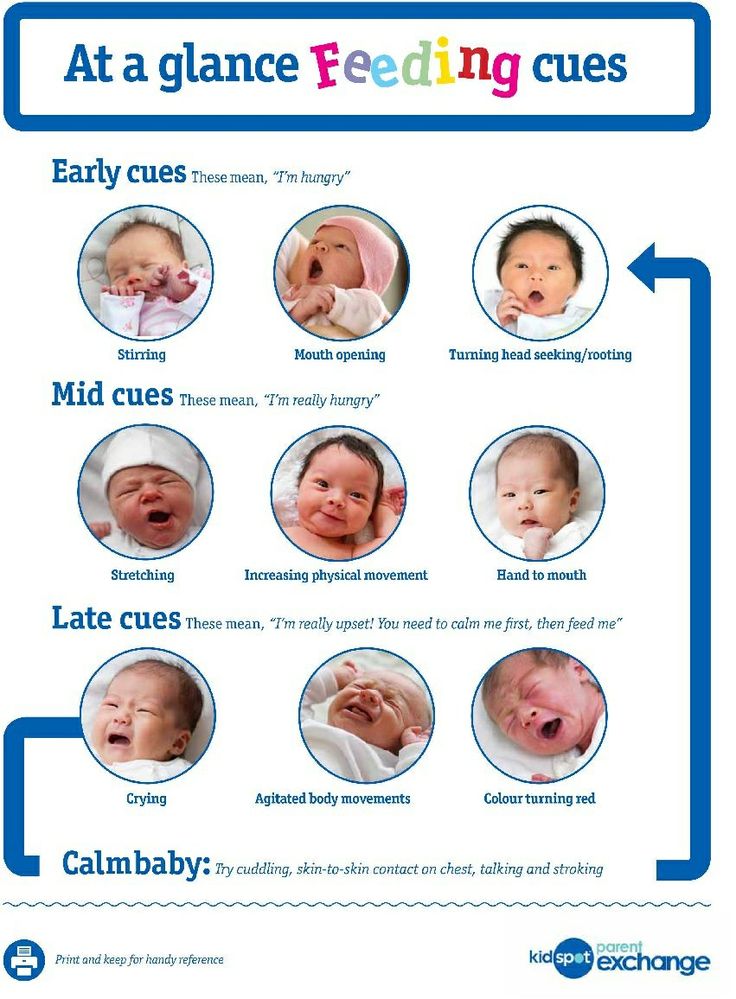
Produced BEFORE and DURING breastfeeding causes milk to DROP
Sensory suction impulses
- Promotes uterine contractions
- No additional food other than breast milk should be given to a baby under 3-4 months of age. nine0011
- It must be remembered that during the day the baby sucks out different amounts of milk.
- Negative emotions block the oxytocin reflex, resulting in spasm and poor milk flow.
- The positive psychological attitude of the mother, the desire to breastfeed her child and the belief that breast milk is the best food for children are important.
- It is important to observe the rules of personal hygiene (clean linen, hands, mother's chest).
- The duration of feeding is currently not limited. nine0011
Among the most important factors in the formation of full lactation in the early days are:
- Skin-to-skin contact;
- Early breastfeeding;
- Joint stay of mother and child in a maternity hospital;
- Feeding the baby "on demand";
- Application to both mammary glands;
- Exclusion of pre-lactation feeding and supplementation; • Exclusion of devices imitating mother's breasts (nipples, pacifiers).
 nine0011
nine0011
There are certain rules to follow with an infant:
- There should not be co-sleeping with an infant!!!
- forbid yourself to take a baby to bed !!!!!!!
- the baby does not belong in a bed with other family members, also do not put him to sleep with each other, in order to avoid harm in a dream;
- do not overheat the baby, there is no need to wrap him in a large amount of clothes; nine0008
- no need to swaddle the baby tightly. He should be able to change the position of the head and body in case of lack of air;
- the surface of the bed should be pretty flat, without extra pillows, duvets, blankets. These items can accidentally cut off the oxygen supply to the baby. But even under the weight of your body, it should not fall through, otherwise there is a high probability that the child will get there on his face and strangulation may occur;
- there is no need to put the child to sleep between you and the back of the sofa, albeit soft, so that he is not sandwiched between the fabric and the body of an adult; nine0008
- consider measures that will protect your baby from an unexpected fall from your bed.
Feeding technique Bottle feeding
Feeding technique Bottle feeding is not really difficult. However, there are a few feeding rules you should remember to avoid baby tears, food spills, and other problems.
The position taken by the feeder should resemble the natural position of the mother during breastfeeding:
- The child's head should rest on the left hand.
- The nipple that enters the baby's mouth must always be full of milk or formula - otherwise the baby will swallow air which can cause colic.
- The appearance of bubbles in the bottle means that the child is eating incorrectly and you need to help him, change the position, tilt the bottle in a different way.
- Do not leave a baby alone with a bottle and do not let the baby sleep with a bottle in his mouth - in both cases this can lead to choking. nine0008
- It is best to feed your baby when he is in your arms - babies feel most secure in their parents' arms.
- Remember that the baby's head should always be slightly higher than his torso.
- Make sure the baby does not tilt the head too far back or forward - if the head is in the wrong position, it becomes more difficult for the baby to eat, and the wrong head position can also cause food to enter the respiratory tract.
- When a baby eats from a bottle, he swallows air with nutrition, so he may feel full, despite the fact that he ate little. nine0008
- Take breaks every 5 minutes during feeding so that the baby has the opportunity to burp.
- After he has let out air and some food, he will feel hungry again.
- In order for the baby to burp, you need to change his position: put the baby's head on your shoulder and support his back with your hands.
- The child must be in an upright or semi-upright position. If the baby does not burp between feedings, the accumulated air will lead to the formation of painful gases. nine0008
- The sitting position is the most classic feeding position.

 These foods should be strained, mashed, or finely minced.
These foods should be strained, mashed, or finely minced.
 The head and body of the child should be in a straight line, the mother should press the body of the child close to her. nine0011
The head and body of the child should be in a straight line, the mother should press the body of the child close to her. nine0011 
 Breast milk contains enough water. Artificially fed babies need water.
Breast milk contains enough water. Artificially fed babies need water. 
